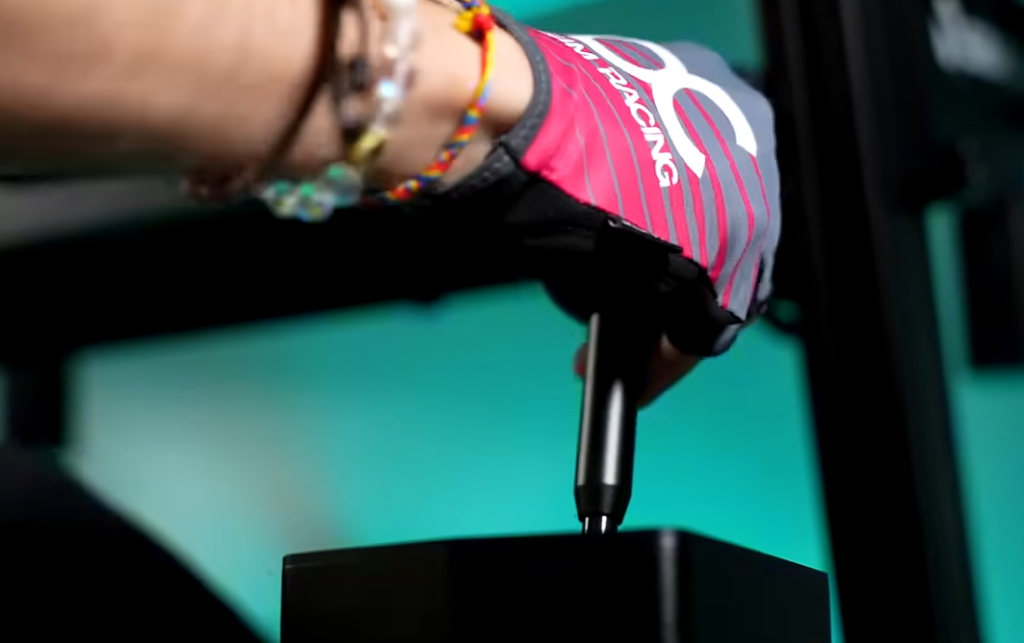
A Next-Level Guide to Performance and Innovation
Sim racing is more than just a game—it’s an evolving ecosystem of skill, strategy, and technological advancement that mirrors real-world motorsports. While traditional guides focus on basic techniques, this upgraded blueprint explores unconventional training methods, cutting-edge technologies, and psychological mastery—pushing beyond conventional wisdom to redefine the way you train.
1. Rethinking Sim Racing Practice: The AI-Powered Training Framework
Conventional Thought: Improvement in sim racing follows a linear path—better setups, more practice, and faster lap times.
Innovative Approach: Apply an AI-assisted, structured progression model inspired by F1 driver training and cognitive science.
Step 1: Cognitive Warm-Up with Neuro-Racing Techniques
Before jumping into the simulator, boost your mental agility using:
- Eye-tracking drills → Apps like NeuroTracker improve peripheral vision and reaction times.
- AI-assisted decision-making → Tools like iRacing’s AI ghost mode allow you to race against your own best lap or pro telemetry data.
- Heatmap Analysis → Use AI to visualize braking inconsistencies, throttle application, and racing lines.
Step 2: The Multi-Sensory Training Matrix
- Sim-VR Hybrid → Train in VR for enhanced spatial awareness, then switch to triple screens for precision training.
- Hand-Eye Isolation Drills → Drive with reduced FOV or only rearview mirrors to sharpen reaction speed.
- Biomechanical Adaptation → Use force-feedback gloves and dynamic seat movers to improve real-time control adaptation.
Step 3: AI-Optimized Racecraft & Adaptive Strategy Simulation
Traditional racecraft focuses on overtaking techniques, but AI-driven race modeling takes this further:
- “What-If” AI Scenarios → Train with AI-generated race situations that simulate real-world unpredictability (weather, mechanical issues, tire wear).
- Dynamic Stint Optimizer → AI tools predict optimal pit strategies, fuel loads, and tire degradation in long races.
- Automated Driver Shadowing → Simulate side-by-side battles with historical data from real-world F1 or GT drivers.
Why This Works: Training beyond muscle memory elevates mental adaptability, race IQ, and real-world transferrable skills.
2. The Future of Sim Racing: From Digital to Reality
Sim racing has already revolutionized motorsport—but how can you leverage this evolution into a hybrid digital-physical mastery model?
Sim-to-Real Crossover: How to Train Like a Professional Driver
- Haptic-Based Car Physics Mastery → Advanced setups now replicate chassis flex, suspension dynamics, and real-world downforce through adaptive feedback.
- Tire Degradation Simulation → Upcoming sims will feature realistic compound wear based on real-world data.
- Hydraulic Motion Simulators → Affordable rigs like the DOF Reality P3 mimic actual g-force weight transfer—a game-changer for endurance racers.
The Neural Mapping of Racing Instincts
- EEG-Driven Training → Brainwave analysis tools (like those used in NASA pilot training) can enhance focus consistency and reaction speed.
- Biomechanical AI Coaches → Machine learning will soon track your racing posture, stress levels, and muscle fatigue—helping you optimize endurance for long sessions.
- AI-Generated Custom Tracks → Personalize circuits for adaptive training, learning to master tire wear and braking control dynamically.
Why This Works: These hybrid methods enhance real-world racing instincts, mental endurance, and next-gen racing precision that go far beyond standard lap-time grinding.
3. The Future of Racecraft: Machine Learning Meets Intuition
The best sim racers don’t just memorize tracks—they think five laps ahead, predict traffic, and adapt instantaneously.
Predictive Racecraft Techniques (Beyond Traditional Overtaking)
New Training Methods:
- AI-Simulated Opponent Behavior Mapping → Train against adaptive AI that mimics real-world drivers’ styles (e.g., Verstappen’s aggression vs. Hamilton’s patience).
- Multi-Class Racecraft Optimization → Study and predict the behavior of slower and faster traffic in endurance races.
- Reverse Engineering a Race Pace → Instead of chasing lap times, train by adjusting tire wear and fuel load strategies to maximize consistency over a full race.
Why This Works: These techniques blend machine learning and intuition, creating a racer mindset that predicts the unpredictable.
4. The Mindset of a Champion: Racing Psychology Meets Neuroscience
The best sim racers are not just fast—they are unshakable. Here’s how to train like them.
Neuroplasticity & Sim Racing: Hardwiring Elite Performance
Cognitive Load Training → Increase mental endurance with:
- Forced Distraction Drills → Train with music, random noise distractions, or simulated radio chatter.
- Adaptive Breathing Protocols → Use Wim Hof breathing techniques to maintain composure under stress.
- Cortisol Control via HRV Training → Heart rate variability (HRV) monitoring helps control stress responses in high-pressure races.
Why This Works: By rewiring stress responses, you build mental resilience—critical for high-stakes wheel-to-wheel racing.
5. The Evolution of Sim Racing: A Glimpse Into the Next 5 Years
Looking ahead, where will sim racing training go?
The Cutting-Edge of Racing Simulation (2025–2030)
- Why This Works: The next frontier of **sim training isn’t just about faster lap times—it’s about hyper-adaptive learning and machine-driven racecraft evolution.
- Cloud-Based AI Coaching → GPT-driven racing coaches will analyze live telemetry and suggest real-time adjustments mid-race.
- Neural-Feedback Steering Systems → Sim gear will evolve to adjust force feedback dynamically based on cognitive stress.
- Personalized AI Race Engineers → Virtual race engineers will track fatigue, concentration lapses, and adaptive strategy optimizations in real-time.
- Quantum Physics-Based Tire Models → Simulators will integrate quantum computing to predict the most accurate tire physics models ever built.
Why This Works: The next frontier of **sim training isn’t just about faster lap times—it’s about hyper-adaptive learning and machine-driven racecraft evolution.
Final Takeaways: The Next-Gen Sim Racer’s Training Blueprint
✅ Train smarter with AI, predictive telemetry, and cognitive science.
✅ Adapt real-world racing methods (like F1 data analysis) into your sim routine.
✅ Enhance racecraft using machine-learning-based opponent simulations.
✅ Rewire mental resilience using neuroplasticity and distraction training.
✅ Prepare for the next evolution of sim racing with haptic, AI, and neural feedback systems.
Are you ready to revolutionize your sim racing training? The future isn’t just about lap times—it’s about machine-augmented learning, predictive strategy, and next-level racing instincts.
Are You Ready to Revolutionize Your Sim Racing Skills?
Stop grinding laps the old way—train smarter, not harder. Master AI-powered racecraft, predictive telemetry, and next-level mental strategies used by the pros.
Click here to unlock the future of sim racing and gain your competitive edge
